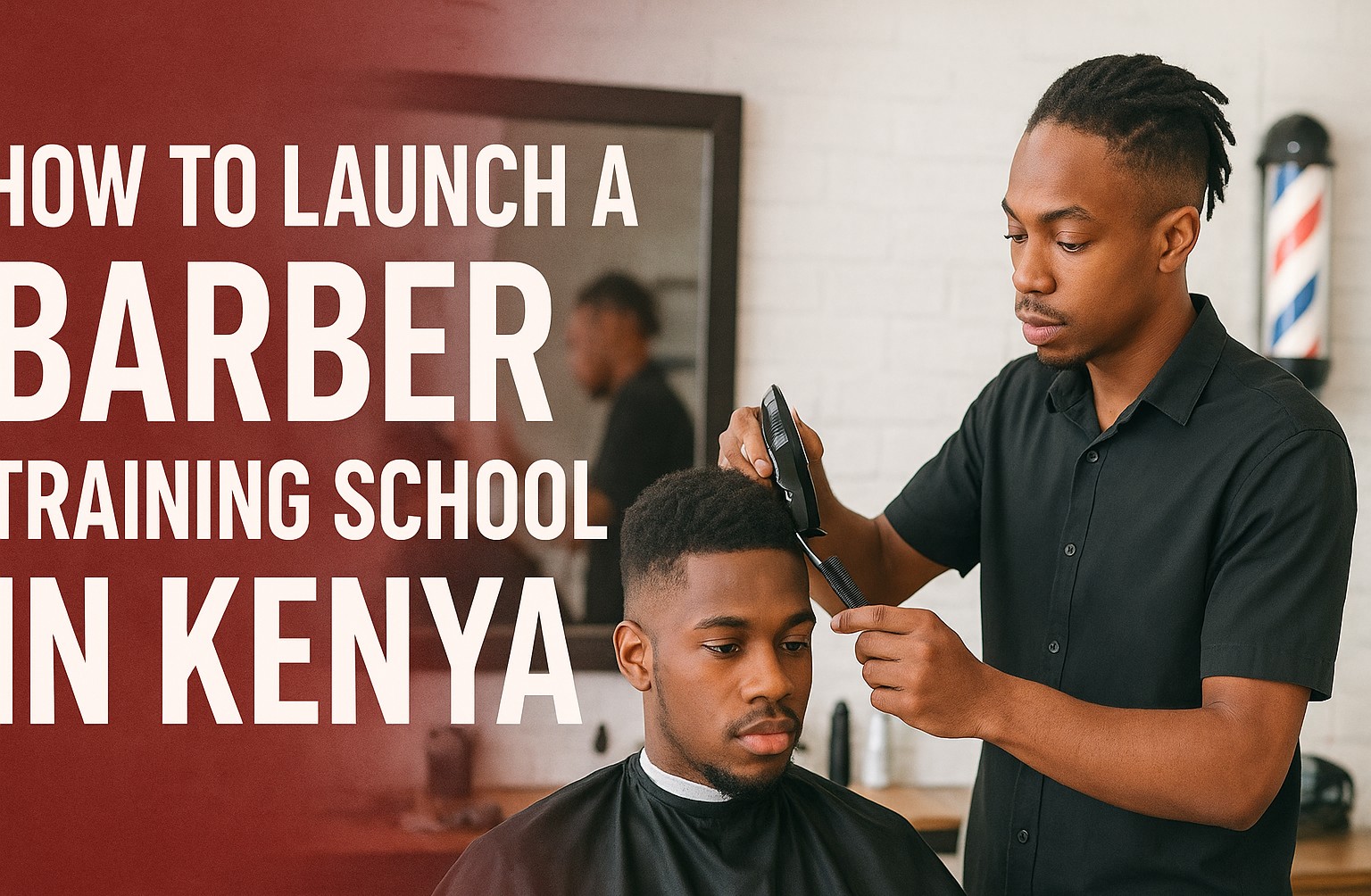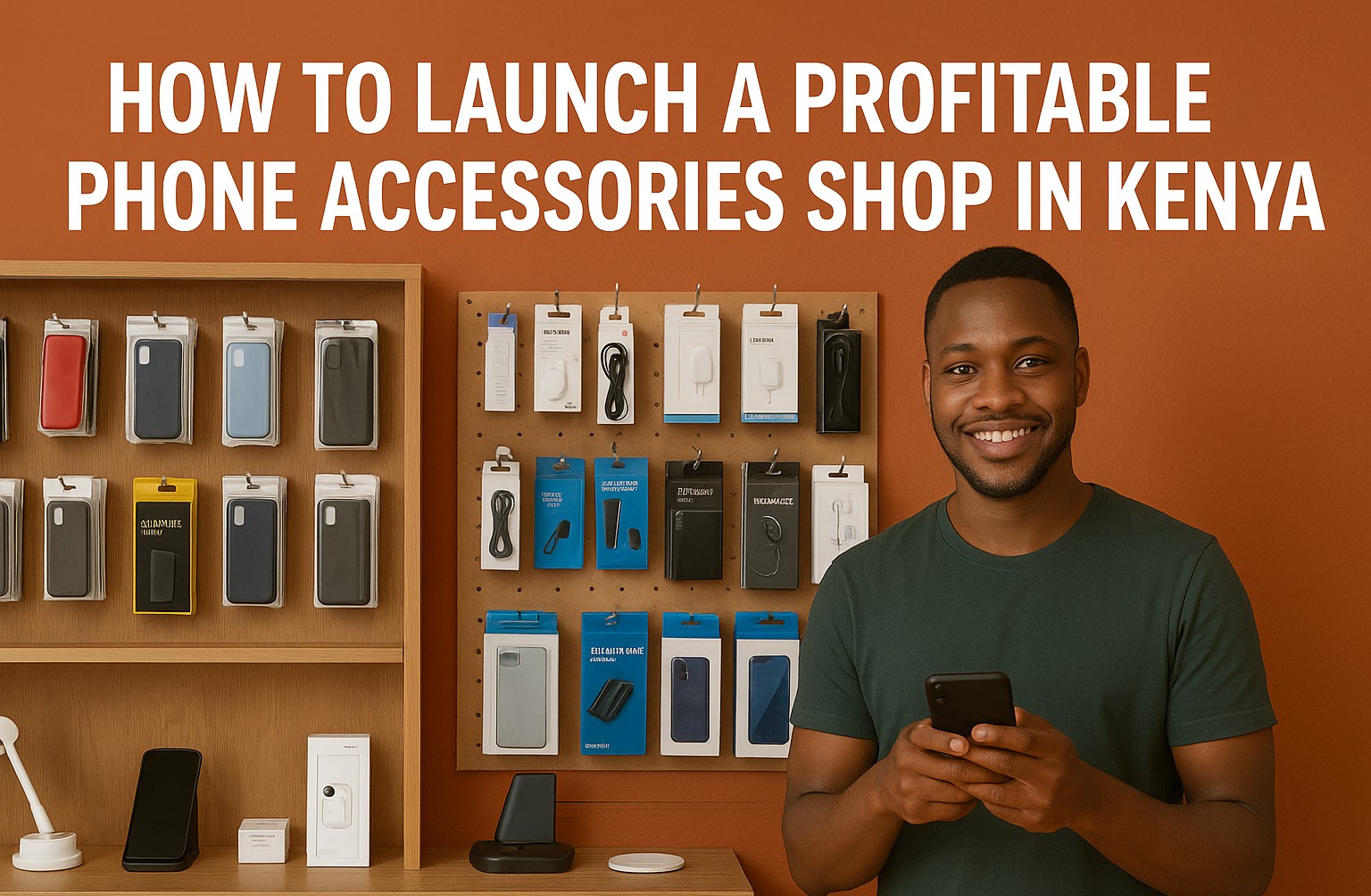

Titus Morebu
Author
How to Launch a Successful Barber Training School in Kenya: A Step-by-Step Guide 💈
Start your own barber training school in Kenya with this actionable guide — from licensing and curriculum design to marketing and operations — and build a reputable institution.
Ready to turn your passion for barbering into a legacy? Launching a barber training school in Kenya is a powerful way to impact lives, grow a scalable business, and raise the bar for professional grooming. This guide takes you from idea to execution — with real steps, regulatory insights, and sustainable strategies. 🧰
Why Start a Barber Training School?
- Growing demand for skilled barbers: As grooming standards rise in Kenya’s urban areas, there’s a hunger for well-trained professionals.
- Income diversification: You can combine training, product sales (clippers, hair products), and even franchise/licensing later.
- Social impact: Empower youth with employable skills and reduce unemployment.
- Brand authority: Running a training institution enhances your standing in the barbering/beauty ecosystem.
1. Conduct Market Research & Validate Your Idea
Before you invest, validate demand in your specific region (Nairobi, Mombasa, Kisumu, etc.). Ask questions like:
- Are there existing barber training schools nearby? What are their strengths/weaknesses?
- How much would a prospective student be willing to pay?
- What specific skills or courses do students or salons request (fade techniques, beard design, hygiene, business skills)?
This research shapes your niche, pricing, and curriculum.
2. Develop a Business Plan & Budget
Your plan serves two key roles: guiding you operationally, and helping get funding (investors, loans, grants). Include:
- Mission & Vision: The core purpose and long-term ambition of your school.
- Courses & duration: Certificate, short courses, advanced barbering, refresher classes.
- Fee structure: Tuition, materials, kits, exam fees, registration.
- Revenue streams: Training, kit sales, grooming services, franchising/licensing, workshops.
- Fixed & variable costs: Rent, utilities, furniture, tools, staff salaries, marketing.
- Cash flow & break-even timeline: Project how many students you need per intake to break even.
- Risks & mitigation: Low enrollment, regulations, competition, quality control.
3. Register the Business & Secure Licenses
To operate legally, follow these steps:
- Business registration: Register with the Business Registration Service (BRS) via eCitizen (company, partnership, or sole proprietor). Ensure name reservation, registration, PIN, etc.
- Single/Unified business permit: Acquire a permit from your county government. This ensures you can legally run an educational/training business. Counties often require proof of location, company registration, and other documents.
- TVET / institutional registration: Since barber training is vocational education, you must register as a training institution under Kenya’s TVET regulatory framework. Use the TVET MIS portal to apply. The process typically includes:
- Obtaining a “Letter of No Objection” for private institutions
- Creating an institutional account on the TVET MIS portal
- Filling the required forms and paying fees
- Allowing inspection by the authority
- Licensing of the programs you will offer
- Trainer accreditation: Your instructors must be registered as TVET trainers. Requirements often include a craft certificate, pedagogy/teacher training, good conduct certificate, and continuous professional development. Trainer licenses typically last three years.
- Training provider registration under NITA: The National Industrial Training Authority (NITA) has guidelines to register training providers. You may need to adhere to their standards in curriculum development, assessment, facilities, and staff capacity.
4. Design Your Curriculum & Certification Pathways
Your curriculum is the heart of your school’s value. Design with care:
- Modular structure: E.g. fundamentals → advanced styles → hygiene & safety → business & client relations.
- KNQF/TVET alignment: Align courses to Kenya National Qualifications Framework (KNQF) so your certificates are recognized. Barbering courses often exist at KNQF Level II/III.
- Assessment & trade testing: Include practical exams, written assessments, and simulated client tests. Partner with trade test bodies to certify graduates.
- Attachment & internships: A strong training school places students in real barbershops for real-world exposure.
- Continuing education: Offer refresher courses, advanced styles, new techniques to alumni.
5. Setup Infrastructure & Equip Your Facility 🏢
Your training environment must be functional and welcoming:
- Premises & layout: Enough space for theory classrooms, practical bays, reception, wash basins, and storage.
- Furniture & fittings: Student chairs, barber chairs, mirrors, sinks, workstations.
- Tools & equipment: Clippers, trimmers, shears, straight razors, sterilizers, combs, capes, shaving kits, etc.
- Materials & supplies: Disposables (razor blades, towels), cleaning agents, sanitizers.
- Health & safety compliance: Ventilation, fire safety equipment, first aid kits, waste management, sanitation.
- Digital setup: Computers, projectors, recording equipment (for demo videos), LMS software (if offering blended/online modules).
6. Recruit Qualified Staff & Instructors
The quality of your trainers drives your reputation:
- Technical competency: Seasoned barbers with strong technical skills in different styles.
- Pedagogical training: Instructors must know how to teach, assess, and mentor.
- Support staff: Administration, admissions, finance, marketing, maintenance.
- Continuous development: Facilitate workshops, external exposure, and industry exchange visits.
7. Marketing, Branding & Student Recruitment 🎯
Even the best school needs outreach and visibility:
- Unique selling proposition: What sets you apart? Specialist courses? Alumni placement? Lifetime support?
- Online presence: Build a website, social media (Instagram, TikTok, Facebook), video demos of student work, testimonials.
- Open days & workshops: Host free masterclasses or grooming demonstrations to attract prospects.
- Partnerships: Collaborate with barbershops, salons, community groups, youth programs for referrals.
- Scholarships & payment plans: Offer flexible financing or partial scholarships to attract more students.
- Alumni & word-of-mouth: Happy students refer new ones — incentivize referrals.
8. Operations, Quality Assurance & Scaling
- Student management system: Track attendance, grades, certifications, feedback.
- Internal QA processes: Periodic curriculum review, student satisfaction surveys, instructor evaluations.
- Compliance & renewals: Keep licenses, accreditation, permits, and trainer registration up to date.
- Recordkeeping & financial controls: Transparent accounting and audit readiness.
- Scale via branches or franchising: Once the model is validated, replicate in other counties or regions.
9. Financial Models & Revenue Projections
Estimate revenue streams and costs:
- Tuition fees (per intake, per seat)
- Kit & tool sales (students buying starter kits)
- Service revenue (run a student-operated barbershop on site)
- Workshops & masterclasses (paid events)
- Grants or donor funding (youth empowerment programs)
Project at least 3–5 years ahead. Plan for lean periods while new cohorts build.
10. Challenges & Risk Mitigation
Be aware of common risks and how to respond:
- Regulatory delays: Engage early, follow guidelines strictly, and maintain communication with licensing bodies.
- Low enrollment: Start with pilot batches, offer early bird discounts, strengthen marketing channel mix.
- Staff turnover: Offer retention incentives, good working environment, growth paths.
- Quality dilution: Resist scaling too fast; always maintain quality in each branch or cohort.
Conclusion & Next Steps
Starting a barber training school in Kenya is a rewarding venture that combines education, entrepreneurship, and community impact. The path involves research, compliance, curriculum design, staffing, operations, and continuous improvement. But with dedication, you can build a respected institution that transforms lives and contributes to the professional grooming sector.
Ready to begin? Start today by registering your business, then move into the TVET licensing steps. Your first cohort will validate the model—and set you on the road to meaningful growth. 💪
Gallery

Related Articles
3 articles
How to Launch a Profitable Water Refill Station in Kenya 💧
Learn how to set up a water refill business in Kenya: from permits, equipment, water safety, and marketing to profit strategies — your step-by-step guide.

How to Launch a Profitable Phone Accessories Shop in Kenya 📱
Want to start a phone accessories shop in Kenya? Learn step-by-step how to set up, source, market and grow your store for sustainable profits.

Profitable Fish Farming Ideas in Kenya: Top Opportunities & Smart Strategies
Explore the most viable, high-return fish farming ventures in Kenya, with modern methods, species ideas, cost breakdowns and growth tips for success.